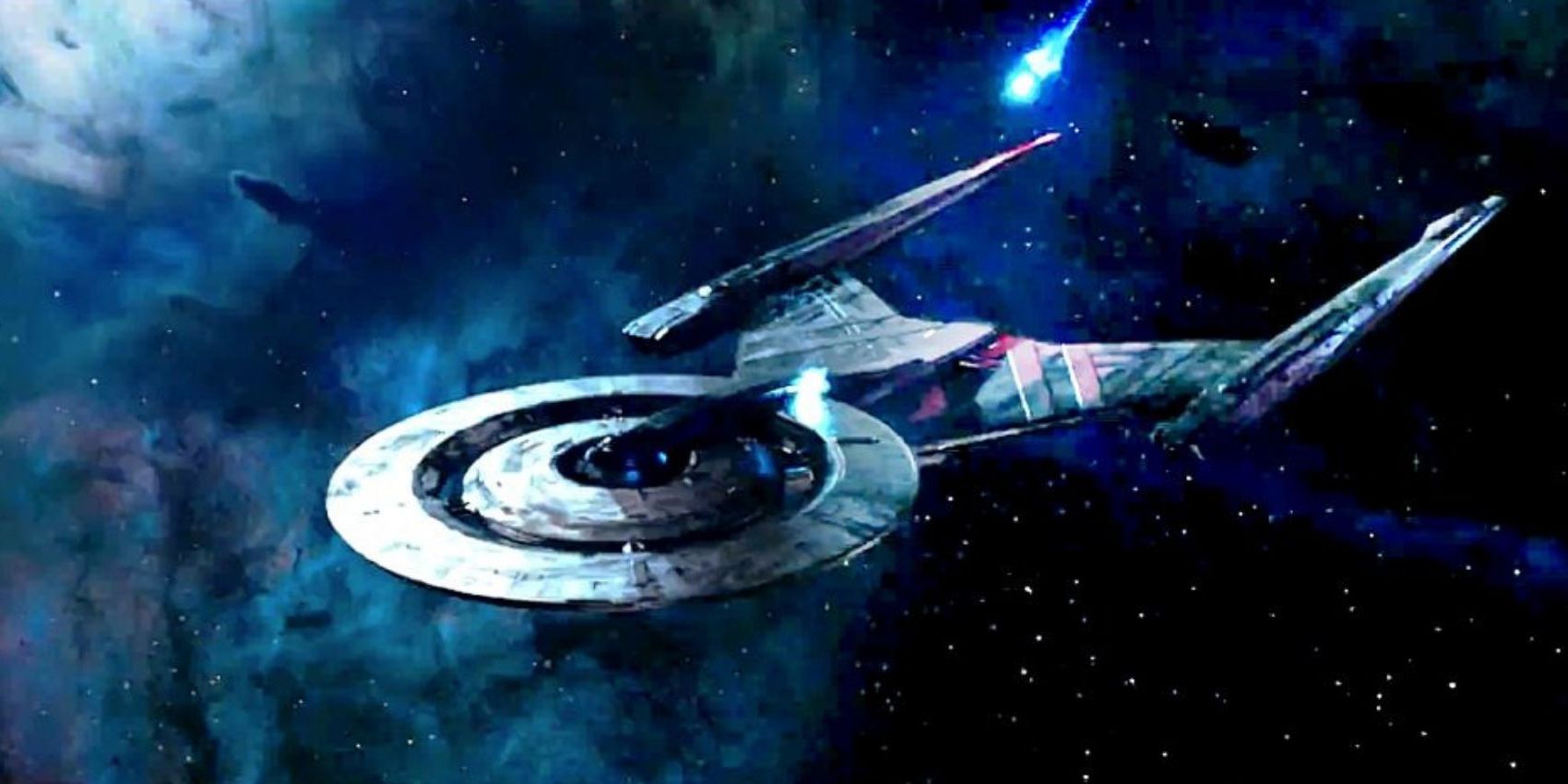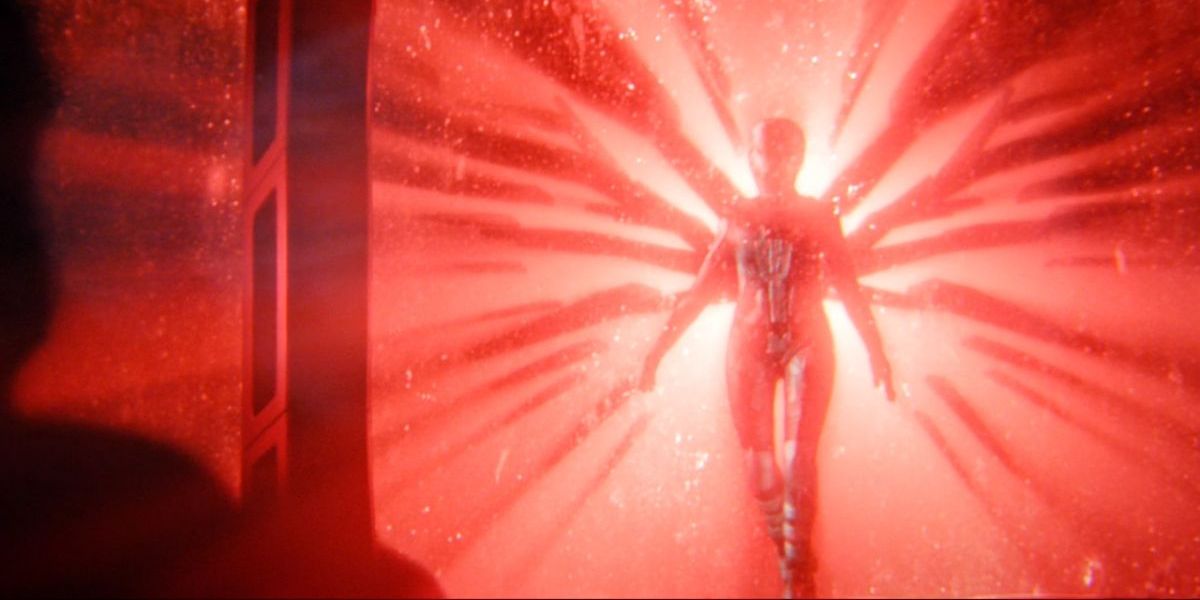The second season of Star Trek: Discovery hinges on the mysteries of time travel. The crew pursues seven red burst signals through the stars, eventually finding they were sent by a time traveler they have named the Red Angel. Michael Burnham and the Discovery crew's relationship with time only grows more complex towards the end of the season, when they decide to send the ship nearly a thousand years into the future to prevent a self-aware AI, Control, from getting its hands on precious data from an ancient life form (the "Sphere"), and evolving to subjugate all intelligent life.
Science fiction's job is to pose questions about the universe, humanity, and evolving technology. Discovery does this in plenty of ways, and when it comes to time travel, it seeks to know: Can our future selves interfere with their own timelines? If they did, would we know it was happening? Are some things predetermined, bound to happen; and if they are, why? The overarching plot of Discovery's second season explores these questions through a classic element of time-travel stories: the causal loop.
A causal loop, also known as a bootstrap paradox, is a type of paradox in which a sequence of events begets itself, and as a result, its starting point is impossible to determine. In other words, a specific event occurs and sets off a chain of events. The end result of this chain is the event that caused the sequence to begin in the first place. The question, then, is where did the first event originate? What began the causal loop?
Time-travel stories in fiction are rife with this trope. One famous example occurs in the first Back to the Future film: Marty McFly plays "Johnny B. Goode" onstage while Chuck Berry, the song's original artist, listens over the phone, implying that this is the moment when he got the idea for the song. It then logically follows that Berry recorded the song, resulting in Marty hearing and learning it. Another, simpler example can be seen in Harry Potter and the Prisoner of Azkaban, when Harry sees the Patronus charm from across the lake — and then later, after using the time-turner, realizes that it was his own Patronus, and performs the spell to save his past self from the Dementors. As he remarks to Hermione later on, "I knew I could do it, because I'd already done it!"
This line can be applied to Michael's experience in Discovery as well. In "Such Sweet Sorrow (Part 1)," the season's penultimate episode, it is discovered that the bioneural signature of the Red Angel who sent the seven burst signals was Michael herself, not her mother, as was previously thought. This leads to the epiphany that there have been two Red Angels all along. Michael can see that her future self is trying to lead the crew of Discovery to something, she's not sure what — at least not yet. In the next episode, though, she is able to understand.
At this point in the season, the crew has found five of the seven signals: one on a lone asteroid where a derelict ship was stranded, one on the planet Terralysium, one on the Kelpians' homeworld of Kaminar, one on the planet Boreth where time crystals are kept, and most recently, on the planet Xahea. In the midst of battle against the rogue AI Control, Spock comes to the realization that following each signal gave Discovery something they would need for either the battle itself, or to create the Red Angel suit. The signal on Kaminar would lead to the Kelpians aiding them in battle, the signal on Terralysium indicated a place of refuge after sending Discovery into the future, the time crystal was needed to power the suit, etc. When her brother explains this epiphany, Michael realizes that they are in an open loop, and only she can close it by sending the signals now.
Just as Harry Potter knew he could perform the Patronus charm since he had seen it before, Michael only knows when and where to leave the signals because she herself had been following them. At the end of the season, she now knows who and what the crew will need to assemble the Red Angel suit, defend themselves against Control, and send Discovery through the wormhole. She makes her mad dash back through time, sending the five signals seen so far, to provide the crew of Discovery with everything they need to reach the point where they find themselves in the present. Once she returns, she uses the sixth signal as a guiding beacon for Discovery to follow her through the wormhole, and later on, sends the seventh as a signal to her brother that she is safe.
The question that remains, however, is the one that lingers in all causal loops: what is the point of origin? In a world where the original recording of "Johnny B. Goode" was inspired by a cover performance of the original "Johnny B. Goode," who or what actually wrote the song? In Season 2's finale, Michael sends the signals so that she could see and follow them — and is only able to do so because she had already seen and followed them. So where did her knowledge of those signals truly originate?
As the causal loop paradigm states, the answer is impossible to know — just as it's impossible to determine what would have happened if Michael had not gone back to send the signals. Perhaps the actions of the Red Angel, and therefore the fate of Discovery, were predetermined: to boldly go where no man had gone before, and leap into the unknown future.

.jpg)

